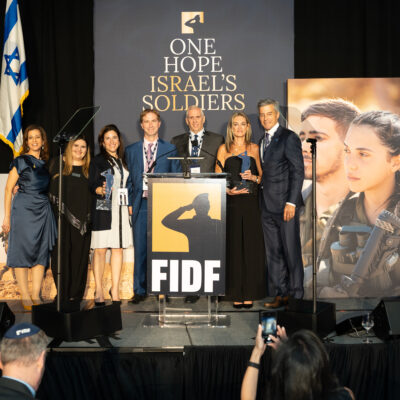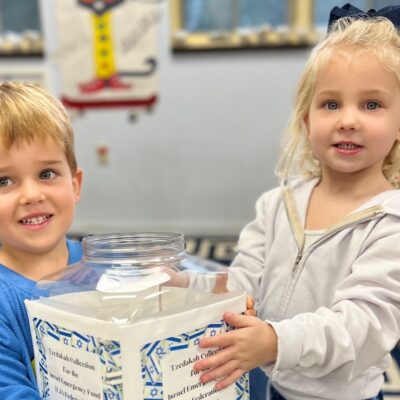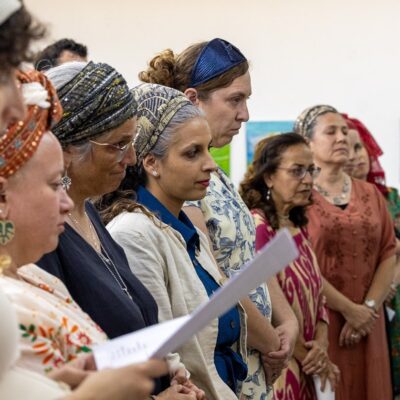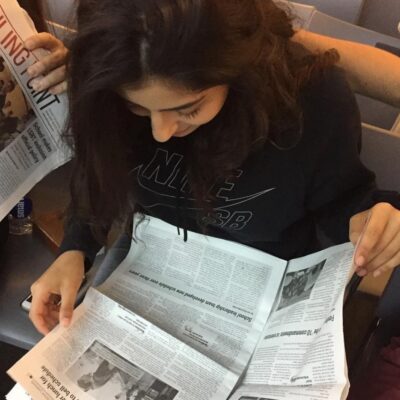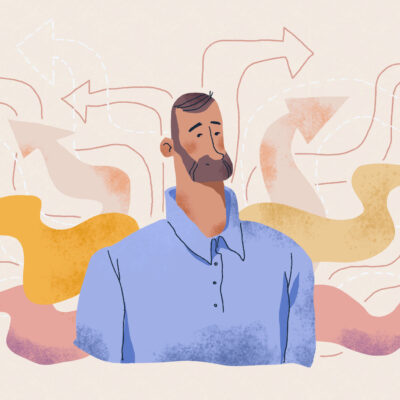Opinion
Creative Genius
Is it OK to sing and text at the same time?
In Short
Tapping into creativity and imagination can give Jewish education a far greater impact for students
What do Pirkei Avot, a traveling salesman, a pop song and a modern-day painting of the golden calf have in common? On the surface, absolutely nothing. But while a research team of nine seventh and eighth graders, with my support, conducted 11 months of research at Gross Schechter Day School in Cleveland regarding the integration of arts and culture and Jewish text study, we stumbled onto the fact that there is a lack of curriculum that allows for children to use their creativity and imagination in order to delve deeper into Jewish learning.
The British author and orator Sir Ken Robinson said, “Imagination is the source of every form of human achievement. And it’s the one thing that I believe we are systematically jeopardizing in the way we educate our children and ourselves.”

Getty Images
Creativity and imagination are critical to truly absorb the meaning behind Jewish texts. So we created our own curriculum.
Miriam Heller Stern, PhD, once introduced me to kintsugi, a Japanese art form meaning “golden joinery” in which pieces of pottery are broken, reassembled, and the cracks and flaws are painted in gold. We learn there is beauty in rebuilding; in imperfection; in transformation.
Now more than ever, we need Jewish education not only to resonate with our students, but be transformative. We need to tap into their Jewish sensibilities to strengthen their Jewish connection at a time when other forces are attempting to tear it apart. This means the stakes are higher when we examine ways of making Jewish text study more accessible. And the data collected from the research team proves that arts and culture is a key to doing exactly that.
The team knew that we needed to collect data from a lesson that used an arts activity to explore texts, but as they poured over lessons, they could not find anything that integrated the arts in a way that would motivate students to have the kind of deep conversations that we wanted to elicit. That is when we created an innovative and unique lesson template that could be used for all ages involving a text, a song, a story or plot line from a play, and a piece of art.
For example, with our third grade, we examined Pirkei Avot 2:11,
“Rabbi Joshua said: an evil eye, the evil inclination, and hatred for humankind puts a person out of the world.”
This led to a character analysis of traveling salesman Professor Harold Hill, the protagonist in “The Music Man.” We discussed why good people make bad choices, and brainstormed a list of people from the Torah who followed their yetzer hara (evil inclination) like Harold Hill. Then in chevruta pairs, students examined a painting of the golden calf surrounded by a joyous crowd, and finally, we analyzed Michael Jackson’s “Man in the Mirror.” Returning to the text, students connected the dots with the conclusion that we need to get our priorities straight. Someone said, “We pay attention to money instead of important things about each other and the world. And we need to look in the mirror to change from inside ourselves, so we don’t repeat mistakes like the golden calf. Maybe in the end, we’ll make the right choices, like Harold Hill did, instead of listening to our yetzer hara.” Deep stuff for an 8year-old!
Our research team observed and documented this lesson and others, by taking notes, and taking photos using a method called “photovoice,” which teaches us to take specific photos to document reactions and engagement through expressions and body language. They also created post-lesson surveys for each participant to fill out. Data was collected from the notes, photos, survey responses and interviews that I conducted with some of the students.
After examining and coding all of the pieces of data, and analyzing surveys, quotes from interviews, and body language in photos, it became clear that students felt strongly that the intentional integration of arts and culture and Jewish text study leads to an elevated learning experience, allowing for students to dig even deeper than they normally would to discover true meaning behind the simplest and most complex texts.
So the question is….now what? And the answer is simple and exciting:
- We will continue to build our own curriculum to help our students gain new perspectives in the world of arts and culture, and deeper connections to the texts that are part of the fabric of our Judaic studies.
- We are moving forward to launch an initiative that will help this integration through consistent collaboration between the arts and culture and Judaics departments.
- We will apply this initiative to a new staff professional development plan utilizing chavruta text study, with the support of arts and culture, to illuminate relevant issues and topics in teaching and learning.
The time is right to create experiential Jewish education in order to grab our students’ by their souls. Giving students the opportunity to tap into their creativity and imagination through arts and culture can not only support and elevate Jewish text study, but it can take the concept of Jewish education to a whole new level.


